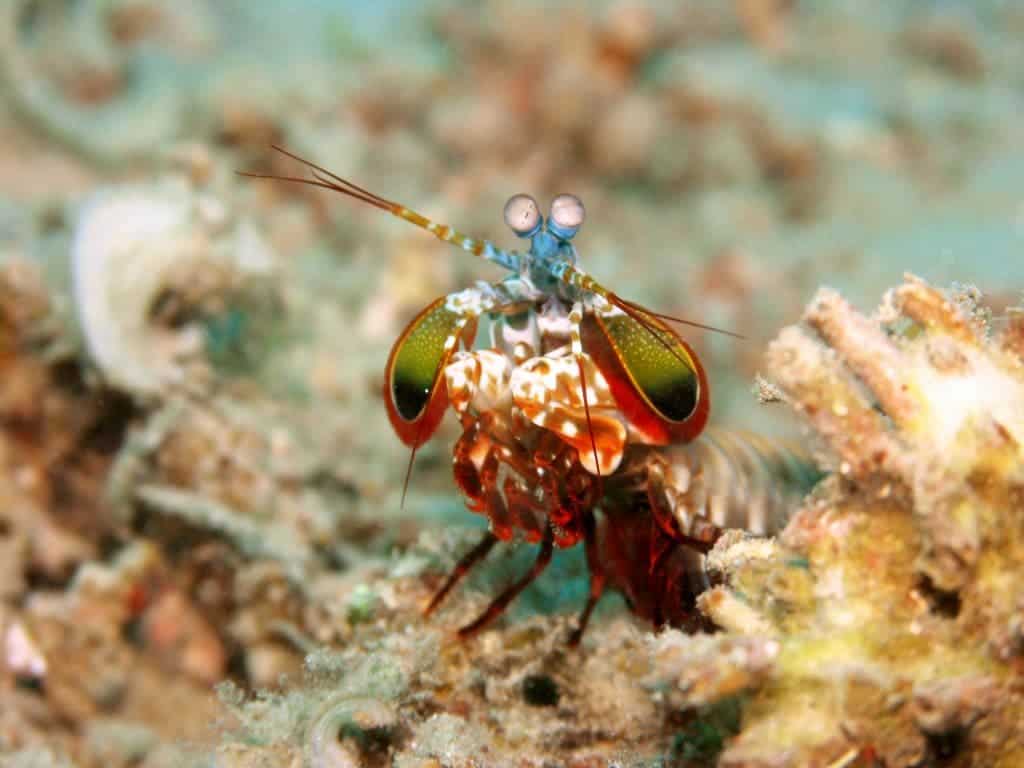Some time ago we wrote about the mantis shrimp’s uncanny form of communication: polarized light. Research focusing in on these tiny animals’ chatter will allow us to create a whole new type of polarizer — an optical device widely employed in modern cameras, DVD players, even sunglasses.
Mantis shrimp are probably best known for the dazzling colors that adorn their shells. The second thing they’re best known for is their tendency to violently murder anything they come into contact with. Using two frontal appendages that can move as fast as a bullet, the shrimp hunts for crabs, oysters, octopi, anything really, blasting them apart with an insanely powerful 1,5 kilo Newtons of force (337.21 lbs of force.)

Image via wikipedia
But why? And how did they come by their weapons? What is the mantis shrimp’s secret? Well nobody knows, because they communicate using a process so secretive most other species don’t even realize it’s happening.
The shrimp rely on light polarization to keep their conversations private. They have evolved reflectors that allow them to control the polarization of their visual signals, a property of light that most other species aren’t able to pick up on.
In an effort to crack their code, researchers from the Ecology of Vision Group (based in the University of Bristol’s School of Biological Sciences) have studied the shrimps and discovered they employ a polarizing structure radically different from anything that humans have ever seen or developed.
The team’s analysis, coupled with computer modelling revealed that the mantis shrimp’s polarizers manipulate light across it’s structure rather than through its depth — as our polarizers do. This mechanism allows the animal to have small, microscopically thin and dynamic optical structures that still produce big, bright and colourful polarized signals.
“When it comes to developing a new way to make polarizers, nature has come up with optical solutions we haven’t yet thought of,” said Dr Nicholas Roberts from the School of Biological Sciences.
“Industries working on optical technologies will be interested in this new solution mantis shrimp have found to create a polarizer as new ways for humans to use and control light are developed.”
The full paper, titled ‘A shape-anisotropic reflective polarizer in a stomatopod crustacean’ is available online here.






